Review of Ghost in the Shell: Stand Alone Complex - Solid State Society
Introduction
If this title had dubtitles, you would be seeing a tantrum right now that would have toddlers shaking their heads in embarrassment.
Fortunately we will all be spared such a crass display, as Ghost In The Shell: Stand Alone Complex - Solid State Society is the one Manga Entertainment title this year to avoid the cost-cutting cull. For good reason too, as Ghost In The Shell is the one current title on Manga Entertainment`s books that can truly be described as flagship, attracting interest that goes beyond its genre. But, this is Manga Entertainment, and perfection is still a lofty goal to be aimed for… This release isn`t without the odd flaw. But it is Ghost In The Shell, and it looks like it will be the last fix that we cyberpunk addicts will get for the foreseeable future, so it`s best to appreciate and savour what we have here.
When Masamune Shirow`s manga was first adapted to the big screen, it was one of those watershed moments in anime, where overnight the industry changed. With the Ghost In The Shell movie, directed by Mamoru Oshii, it was the advent of CGI animation that proved noteworthy for anime creators everywhere. The story was no small shakes either, taking and building on tried and tested sci-fi and cyberpunk concepts, creating something new, fresh and stunning into the bargain, the world`s first animated philosophy action movie. Public Security Section 9, a team of cyborgs of varying degree faced something new, a hacker known as the Puppet Master who was subverting and reprogramming people for his own designs. Ghost In The Shell proved influential for filmmakers the world over. Just watch that first film`s opening sequence, and you will realise that without Ghost In The Shell, there would be no Matrix. Of course there would be no Matrix Reloaded or Matrix Revolutions, so it`s best not to take the comparison too far. But, like Akira, and Spirited Away, Ghost In The Shell is one of those animated movies that you have in your collection just because.
For such a momentous piece of animation, Ghost In The Shell took a surprisingly long time to return to our screens. Hollywood would have sequelized it and have run the franchise into the ground in half the time, but it was seven years before we would see this future world revisited. Given the ending of the first film a direct sequel seemed difficult, so the Ghost In The Shell story was reinvented and transferred to television for a weekly series. Director Kenji Kamiyama took the characters and concept, transferred them to mainland Japan, and wove his own set of stories for Section 9. This 26-part series was called Stand Alone Complex, and as the name implies, it was a combination of episodic stories and a long overarching storyline, as Section 9 faced a challenge from the Salinger quoting hacker, The Laughing Man. The Stand Alone Complex series shifted away from the film by offering an enthralling detective story, leaving the philosophy in the background. It proved successful enough for a second series, the 2nd Gig, which would see The Individual Eleven cyber-terrorist group threaten Japan. Mamoru Oshii meanwhile had figured out how to make a sequel to the first film, and so Innocence came to our screens, having nothing to do with the television series, but picking up where the first film left off in terms of story and philosophy.
That`s a potted history of Ghost In The Shell on screen, and you can read my gushing about these titles in greater detail elsewhere on the site. I absolutely adore Ghost In The Shell: Stand Alone Complex, and two series just don`t seem enough, but the old showbiz adage is to always leave them wanting more. It may have been prudent to go out on the high of the Second Gig, but Kenji Kamiyama now offers us another trip into the cybernetic vision of the future, with a feature length movie, Ghost In The Shell: Stand Alone Complex - Solid State Society (henceforth referred to as GITS: SAC-SSS). Not to be confused with the two Mamoru Oshii theatrical features, this follows on two years after the conclusion of the Second Gig, and builds on that story with the television series characters.
Following the conclusion of the Individual Eleven crisis, Major Motoko Kusanagi left Section 9 to go into business as a freelance investigator. Togusa was promoted to lead the group in her stead, and their numbers began to swell as Aramaki became determined to secure his legacy. Following the Major`s departure, Batou remains out of sorts, choosing his own assignments according to instinct rather than working with the team. But it`s one of Batou`s hunches that lead the team to investigate a terrorist attack planned on the Japanese mainland. But before they can be stopped, the terrorists kill themselves in a wave of suicides, warning in their dying breaths that the Puppeteer is coming. The Puppeteer is apparently a hacker so powerful that he can convince his victims to kill themselves. The terrorist plan had been to use abducted children to deliver a lethal virus, but they were only taking advantage of a larger plan. A large number of children are being abducted and cyberized, their parent`s memories rewritten to forget they even had children. The country`s geriatric population, plugged into a network of automated nursing machines is somehow involved, and when Batou tries to investigate, he runs into the Major, who warns him to stay away from the Solid State Society, lest he becomes a victim of suicide. Could the Major be the Puppeteer?
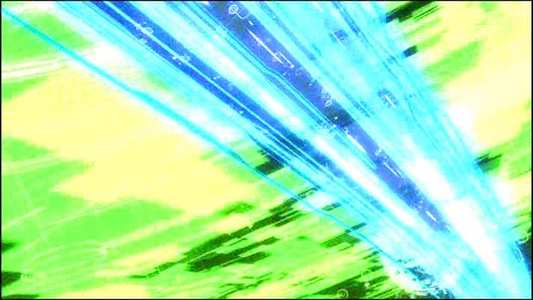
Video
With this release, you get what you got with the 2nd Gig, but more. It is the same world, the same characters, but given a feature film feel. The world is more detailed, the character animation even more fluid if possible, and the CGI is better than before. You can see in the extra features how Nissan and the creators of the animation came together to use a concept car or two in the film. That same attention to detail applies across the board, and if you were finicky enough, you could ignore the film just to look at the how this world is built and populated. Everything feels bigger about the film as well, an attitude announced with the opening sequence of the Major stood atop a crane. The soaring camera shots and grand feel to it announce that this is going to be bigger than the series, and it doesn`t disappoint.
The transfer itself is a pristine 1.85:1 anamorphic one. It`s clear and sharp, the colours are spot on, and damage isn`t even a consideration. Even that staple anime problem with digital banding is absent on this release. The only thing keeping this from that 10 mark is the odd moment of jerkiness in the pans, but even that is barely noticeable.
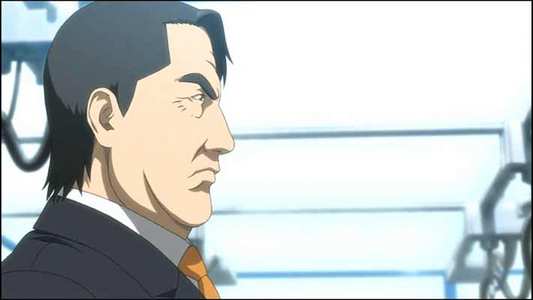
Audio
We get the movie on disc one and the extras on disc two, which means that disc one contains all six of the audio tracks for the film. It`s your usual Manga offering of DD 5.1, DD 2.0 and DTS English and Japanese. These are excellent surround tracks giving your speakers a proper workout with the copious action sequences in this film. There are cars and bullets whizzing by, explosions, excursions into the digital world, and futuristic machinery galore. You must get your money`s worth with the sound design on one of these. Then there is the genius that is Yoko Kanno, once again supplying the film`s soundtrack. Two excellent theme tunes, as well as some new incidental themes offer a whole soundtrack CD worth of music to immerse yourself in (A CD that you get with the US release of the film apparently). Her music gives GITS: SAC its identity, and that`s just as evident here.
I`m a sucker for the original language track, but given that the series cast return for the English language version of the film, you have nothing to worry about on that score. I sampled the English dub and found it up to the standards of the series. Thankfully we get translated subtitles here, although Manga Entertainment could have spent an hour or two on proofreading. There was one incomplete caption, "Conducting an investigation chosen as a result." I`m assuming it would end "Of my gut instinct", at least that was the gist of the English dub, and there was one incorrect word choice, "I should be abide to take him!" should have been "I should be able to take him". These two were the obvious flubs, but there were a couple other instances that made me scratch my head. But I would take four typos over the horrors that are dubtitles any day.
The curious thing is that GITS: SAC-SSS gets a wholly different set of translated subtitles in Region 1 from Manga US. Manga UK opted to completely redo them here, rather than using the US versions. Apparently Manga UK has to pay Manga US for them, which seems a childish way of doing things. It`s like your right hand asking permission of your left to clap.
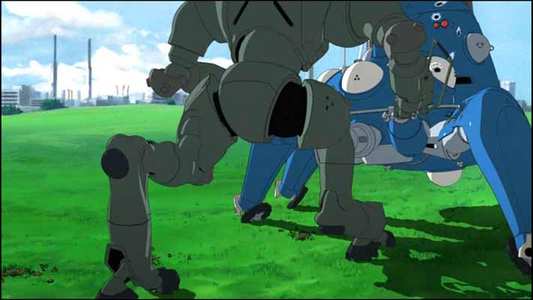
Features
Most everyone else will get the usual dual Amaray case, but if you should happen to wander by your local HMV website, you`ll be able to order the film in a steelbook case. I managed to get a look at one, although the discs inside were review discs minus any label art. The case was also absent of any inlays or printed material. But the steelbook case is certainly nifty, it feels sturdy, it`s cool to the touch, and it certainly suits the movie. Getting the discs out can be a bugger though.
The only extra on disc one is the Storyboard Subtitle track. Switch this on, and you`ll see a little rectangle in the bottom right hand corner of your screen, which offers the pencil sketches used in the storyboard for the particular scene you are watching. It`s subject to limitations of DVD technology, the subtitle stream can really only offer a impression of the storyboard rather than a sharp clear image, and you would think that such an extra would be better suited for a High Definition Disc. Did I mention that there is a BluRay release pencilled in for October?
The rest of the extra features are on the second disc.
Every episode of Stand Alone Complex ended with the Tachikomatic Days animation, featuring our little blue robotic friends. At the end of the 2nd Gig, the larger Uchikomas had replaced them, and hence we get an Uchikomatic Days animation to accompany the feature. It`s longer at 5 minutes, and it is presented here twice, once in English and once in Japanese. I guess that the idea was that the Japanese version would play with burnt in subs, and the English without. In an error the English version has burnt in subs as well.
Anime & Car Design: Designing The Future Car lasts 25 minutes, and the filmmakers and carmakers talk about the collaboration that came about as a result of this film. Togusa drives a Nissan sports concept in the film, and Section 9 has an SUV for the team. Both of these are real world designs that the car company created, and here we learn how the design of the cars, as well as realising them in animation became a two way collaborative process.
English Production Interview lasts 10 minutes, and the English language cast and crew offer some of their thoughts on the film and the franchise in general.
Making A Tachikoma Robot shows that you can`t stop Japanese innovation. They actually built a real Tachikoma. Okay, so it`s only a few inches high, and says some stock phrases, but over 17 minutes Tomotaka Takahashi describes how he turned animation into reality. I want one…
There is a 9-minute conversation with production IG founder, Mitsuhisa Ishikawa, and he talks about the history of Stand Alone Complex, as well as Solid State Society in particular.
Most significant on this disc is the World Work File, which effectively is a 31-minute long spoiler for the film. Naturally, do not watch this before the film itself. But as well as providing a story outline, this also comments on the GITS: SAC world, the characters and the technology, and there are little information nuggets along the way from the production team about how certain bits of animation were accomplished.
The English and Japanese trailers are also on here.
All of the extra features have burnt in subtitles where required.
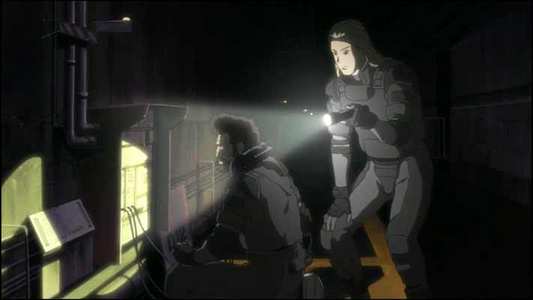
Conclusion
The best way to approach these things is to have low expectations that can be shattered by brilliance, rather than high expectations that end in disappointment. You would think that for me, Ghost In The Shell: Stand Alone Complex and low expectations would be mutually exclusive, but translating an episodic show into a feature has often been fraught with difficulties. Too often, two episodes are merely stuck together, leaving the seams showing. Expanding an episode or two is another idea, often leading to frivolous filler and very little story. On occasion a feature version of a serial anime is so divorced from its origins that it`s barely recognisable. Not so with GITS: SAC-SSS, which seems to have done the opposite. This is almost the 3rd Gig. It is as if Kenji Kamiyama has taken the concept for a full third series, stripped out the Stand Alone episodes leaving the overarching Complex storyline, refined that down to its essentials and presented it as a movie. As a result, I was left thinking that 1 hour and 45 minutes was no time at all for a movie.
The bare essentials means that there is a threat that Section 9 must face, one that challenges their very core strengths, there`s a government conspiracy or two involved, and there are several twists and turns that lead up to a jaw dropping climax that leaves you questioning what you have just seen. In that regard it has much in common with both the 1st and 2nd Gigs. Kenji Kamiyama turns once again to Japanese society for inspiration. The Laughing Man looked at alienation and a craving for anarchy, symptomatic of a generation divorced from and mistrusting of authority. The Individual Eleven had a grander focus that looked at refugees and immigration, and what affect that has on the original population. Here he turns to the aging population. Even now Japan`s population is aging quicker than it can replenish itself. Inevitably there will be greater numbers of elderly needing care, and fewer people to take care of them. At the same time, the birth rate is dropping. This trend is extrapolated in Solid Sate Society. With cyberization and automation, the lack of manpower is no longer an issue when it comes to patient care. Now the elderly are hooked up to nursing machines that keep them alive, and they spend all their time in the virtual world unhindered by their infirmities. When the network that they create forms a sense of purpose, it`s then that the problems begin for Section 9.
This would be all well and good for a series, but a feature needs more, and this is where Solid State Society delivers. Character is very much at the heart of this film, and in many ways the Solid State Society proves to be a lesser foe to be confronted than the characters that face up to themselves. This is especially true of the Major, who has to examine who she is, and what the effect of her cyberization and years of diving into other minds has made her. It`s understandable why she left Section 9 at the end of the 2nd Gig, and while we don`t see her journey of self-discovery in full, we get the most important part. Batou has to come to terms with a Section 9 without the Major, and without the presence of the Tachikomas, he`s moping more often than not. I think he realises here how much he needs the Major, and when it becomes evident that the Major may be on the opposing side this time, the sense of betrayal is palpable. In that regard its understandable why it is Togusa who is willing to give her the benefit of the doubt more than Batou. His character has certainly advanced, taking the place of the Major as operational head of Section 9. He`s finally given in and gotten himself significantly cyberized, and that proves to be a problem when the threat takes a personal interest in him and his family, leading to the film`s most chilling moment.
This film is full of such moments, whether it is the striking animation from the opening sequence, the shocking suicide of one of the terrorists, the tense battle of the snipers as Saito faces off against an opponent in a race against time, and of course the return of the Tachikomas. Yes, the cute blue robots return, as those of you with a fast finger on the pause button would have realised inevitable in the final episode of the 2nd Gig.
That is the only drawback to this film. While you can watch it as a straightforward sci-fi action thriller with no knowledge of what has come before, you will be losing out on a whole heap of nuance and back-story. This is really one of those movies that are made specifically for existing fans. So if you are new to GITS: SAC then take a mark off the final score. Just one mark really, as if anything, this film will make you want to see the earlier series, rather than put you off. But if you have been following Stand Alone Complex as avidly as I have, then this is the film that you have been waiting for. It has a gripping story, solid character development, great animation, stunning action and another must buy soundtrack from Yoko Kanno. This is a worthy follow up to the series, and shows there is still plenty of verve and originality to be exploited. There`s Ghost in the old Shell yet. Hopefully this isn`t the last that we`ll see of the Major. What are you waiting for? Buy, buy, buy!








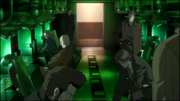
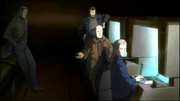


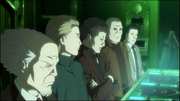


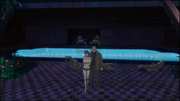
































Your Opinions and Comments
Be the first to post a comment!